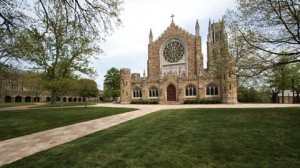7 December 2009 archive
Published Already! 0
 Lauren Edelson is in the Class of 2010 at Catlin Gabel School in Oregon.In her Op Ed piece for the New York Times she brings welcome insight and awareness into what thoughtful teenagers are looking for in a college.
Lauren Edelson is in the Class of 2010 at Catlin Gabel School in Oregon.In her Op Ed piece for the New York Times she brings welcome insight and awareness into what thoughtful teenagers are looking for in a college.
 I have noticed in the last few years, colleges have gone overboard in attempting to connect to the psyche of today’s teens. It goes beyond the fancy dorms, amenities and student unions. Often in that effort, the prospective student can be turned off and confused by the message.
Miss Edelson is one of them. She recognizes that she is passing through a “growing up†phase, though memorable, is now looking toward the future. It is a future that is filled with new opportunities, challenges and responsibilities.
The problem may be in the training (or lack of) of the undergraduate tour guides. I have been amazed at some of the things said by them to prospective “buyersâ€. Often they are much too casual and ignorant of the colleges own philosophy, academic departments and resources.
I know that there will be many college admissions offices reading Lauren’s piece. If some of it applies to them, I hope they do not take this young woman’s view as one in a million.  Â
Others, however, could require a cheque or cash https://hayateli.com/how-to-choose-the-best-essay-writing-service/ payment at the time of the sale.
A Student’s View 0
Taking the Magic Out of College
By LAUREN EDELSON
Portland, Ore.
I DRINK in the tour guide’s every word as he shows my group around Middlebury College’s campus. He tells us about the school’s new science building and gives us the scoop on nearby ski mountains. Dreamily, I imagine my future self: a year older, strolling to class past this very same scene. I’m about to ask about science research opportunities when he points to a nearby field and mentions the sport students play there: a flightless version of J. K. Rowling’s Quidditch game — broomsticks and all.
Back when I was a junior, before I’d printed off an application or visited a campus, I had high expectations for the college application process. I’d soak up detailed descriptions of academic opportunity and campus life — and by the end of it, I’d know which college was right for me. Back then, I knew only of these institutions and their intimidating reputations, not what set each one apart from the rest. And I couldn’t wait to find out.
So I was surprised when many top colleges delivered the same pitch. It turns out, they’re all a little bit like Hogwarts — the school for witches and wizards in the “Harry Potter†books and movies. Or at least, that’s what the tour guides kept telling me.
During a Harvard information session, the admissions officer compared the intramural sports competitions there to the Hogwarts House Cup. The tour guide told me that I wouldn’t be able to see the university’s huge freshman dining hall as it was closed for the day, but to just imagine Hogwarts’s Great Hall in its place.
At Dartmouth, a tour guide ushered my group past a large, wood-paneled room filled with comfortable chairs and mentioned the Hogwarts feel it was known for. At another liberal arts college, I heard that students had voted to name four buildings on campus after the four houses in Hogwarts: Gryffindor, Ravenclaw, Hufflepuff and Slytherin. Several colleges let it be known that Emma Watson, the actress who plays Hermione Granger in the movies, had looked into them. I read, in Cornell’s fall 2009 quarterly magazine, that a college admissions counseling Web site had counted Cornell among the five American colleges that have the most in common with Hogwarts. Both institutions, you see, are conveniently located outside cities. The article ended: “Bring your wand and broomstick, just in case.â€
